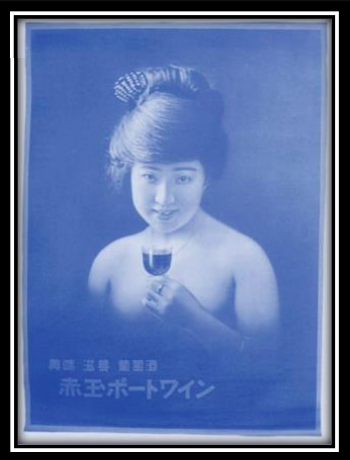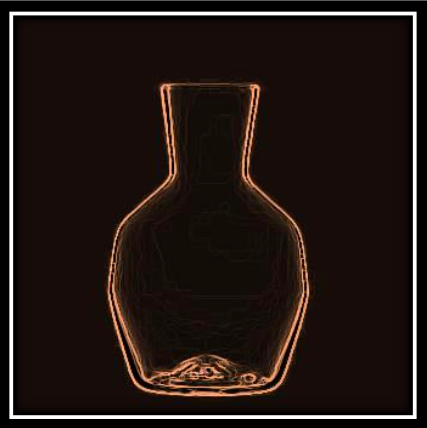
Aladdin and the Magical Lamp
Be careful to wake "the good genie"
Book of Bertil 15.01
CHAPTER 1.0
Coming straight from the Arabian Nights, The Genie is a magical character endowed with "phenomenal cosmic powers"real pocket handkerchief.” He is indeed a prisoner of a lamp coveted by Jafar, the grand vizier of Agra bah, and which has been stored for centuries forced, however, to live in “
in the priceless Cave of Wonders where only a "diamond of innocence" can enter.

15.1.1 Decanting, Oxygenation, and Toys of All Kinds
You said, "I will teach you; I will show you the path you will have to take, I will be your counselor, my eyes will watch over you." Psalms 32:8
Oenophile Version:
Once upon a time, there was a bon vivant (to which we’ll refer to as “them") and lover of good food and good wines who had not taken the time to understand the secrets of the carafe before using it. One day an influencer promised them they could live like the rich by showing them captivating images of how the wealthy exposed their sciences - the biggest possible glasses on the table, wine in a carafe as exuberant as possible, sparkling cutlery, etc... But was this true or just another bit of "fake news?” When how, and why must be asked regarding these the secrets they had to understand to discover the pure pleasures of life, and the magic of the carafe. Thanks to their curiosity, and their perseverance of attention of this reading below, they would live the rest of their life happy and confident and would never again copy these charlatans who worry more about the container than the quality of the content. Because a thousand words are better than a photo.
15.1.2 Wine:
A wine is composed of up to 85% vegetable water, 9.5% to 15% ethanol (alcohol-the result of the action of yeasts and natural grape sugar), then acids (complex and various), residual sugar (2g / l to 45g / l), minerals, anthocyanins, polyphenols, and for reds, rosés and oranges wines - tannins. These elements are complex molecular compounds more or less heavy or volatile, which makes them more or less aromatically present in your glass. Wine is a living matter, that is to say that wine will continuously transform by molecular decomposition (transformation), due to the factors of precipitation of suspended solids, molecular oxidations caused by oxygen, other factors of time and other external agents. This transformation can be beneficial or evil. So how do you know? So, what is the secret of the magic lamp and how not to lose it?
A little comparative explanation:
Imagine that your wine is a color. In its pure state, the color is intense and deep, but now imagine that water or another color slowly or brutally drips on your primary color (oxygen). Your color will turn into another color that is completely different or completely attenuated in its primary intensity. Depending on your intension and your knowledge it will be a success or a disaster. The choice is yours.
15.1.2 Oxygenation or decantation?
That is the question!
15.2.1 Wine Carafe
The carafe is a word used by the wine world. It is different from the pitcher which has a handle. The carafe does not have one. It is used to oxygenate wine. Made into different shapes, it is always large, and of a volume twice that of the liquid that will be poured into it (a carafe of 1.5 L for a bottle of 750ml.) The wine is always poured quickly by introducing a volume of oxygen desired and controlled.
15.1.2.2 The Wine Decanter
The decanter is a wine carafe used specifically for the decantation of an old wine to which one must separate the solid wine sediment from the liquid. It is always of an elongated shape, with a wide carafe mouthpiece and in general it is of a volume 1.25x greater than that of the liquid that will be poured into it (a carafe of 1L for a bottle of 750ml.) The wine will always be transferred with the greatest care and delicacy in order to limit as much as possible the excessive introduction of oxygen. The use of a light source is essential during the transfer.

CHAPTER 2.0
15.2.1 Carafing
(a new word I just invented) aka Aeration or Oxygenation
15.2.1.1 What?
For red wines:
All wines that are of a very deep red color, warm regions (sunshine on more than 80 days a year), and in general a wine of at least 5 years of age*. (There are exceptions).
For white wines:
All wines that are of noble and spicy grape varieties, originating from warm climates and generally a wine at least 5 years old*. (There are exceptions).
For rosé wines:
This is not necessary
For orange wines:
There aren't really any valid answers
For sparkling wines: (Champagne method and PetNat)
Only if you want to make the bubbles disappear and make a flat wine. But why would you do that?
...Sherry (Jerez), Port, Dessert Wine, and Sake:
This is useless, except for Ports (as for the "Vintage" it must be decanted)
15.2.1.2 What for?
This will have several effects on the wine. It will release certain aromas (molecular transformations), soften tannins, and eliminate possible reductive odors, rather unpleasant odors due to the confinement of the wine, deprived of oxygen(especially for“natural"wines). It will therefore make it possible to overcome the disadvantages of youth and will give it a better harmony. The denser the material, the important of tannic structure and the reductive phenomena present, the more the aeration will be profitable for the wine.
15.2.1.3 How?
First remove the entire metal or plastic cap that covers the cork. Using a dry, clean and odorless cloth, thoroughly clean the upper neck and head of the cap. Pour a very small amount of wine into a glass to see and smell the wine to be sure there are no defects (example: tainted or vinegared). Pour the wine from your glass into the carafe and rinse the entire inside of the carafe.
Then pour the wine back into the glass. This process is what removes all foreign odorous molecules from the carafe. Then pour the remainder of the wine from the bottle quickly into the carafe (always hold the carafe at 45 degrees so that the wine is in contact with the inside of the glass shell). For red wines and Ports, let the wine stand at room temperature from 30 minutes to two hours. For white wines, after carafing, place the carafe in a wine bucket that has been previously filled very lightly with ice (2 to 3 inches) and cover (the ice) with a dish cloth folded in half. If all this is done well, the right genie will be at your service.

15.2.2 Decanting
AKA Natural Wine Filtration
For red and orange wines:
All the wines that were very deep red or orange colors whose tannins originally were firm and compact. Wines generally over 10-15 years old. (There are exceptions).
For white, rosé, dessert, and sparkling wines:
Leave the wine in its bottle and pour it gently (to avoid contact with oxygen) into the glasses.
If you want to serve a very old Champagne method that has almost no effervescence: carafe the wine, and with a small whisk (argent or Stainless steel 304 only) whisk the wine to eliminate all the gas. Serve in Burgundy wine glasses.
Ports with a traditional cork:
Transfer to a carafe using a port-to-port funnel, a vertical decanter.

15.2.3 Why?
The whole operation is done simply to separate the deposit of the wine (not good to taste) from the wine with the least possible contact of external agents. Put the bottle in a standing position at least 24 hours in advance to facilitate the deposit of solid particles in the bottom of the bottle. During this operation, a small aeration is inevitable, so you must be careful with wines 10 years old and older. Some may take advantage of it, others may not, some may even collapse. To avoid any unpleasant surprises, I advise you not to decant the wine in advance but to gently pour wine into a flared glass and observe its evolution over 15-20 minutes. The appearance of oxidation* will make you give up the use of a decanter to settle. In this case, use a pouring basket that allows you to keep your bottle almost lying down. When serving your guests, stir the bottle as little as possible and watch the deposit.
*Oxidation: Oxidation, in wine terms, refers to a group of chemical reactions that occur when wine comes into contact with air. It can result in a wine losing its primary fruit characters and developing a brown hue.

15.2.4 How?
If you have to decant the wine, do it at the last moment before serving to reduce the exposure time of the liquid with the air and thus avoid premature oxidation. You will have to limit the movements of the bottle, proceed in one go using a light source (candle or your smartphone) allowing you to detect the arrival of particles in the shoulder and neck of the bottle. It's hard not to lose at least half a glass of wine. This operation is delicate, and I strongly advise you to watch a demonstrative video on internet produced by a professional sommelier.

Memorandum:
Use your judgment, avoid carafing or decanting if you are not sure that it is the right thing to do, or if you have doubts about your ability to proceed correctly. For it is at this moment that an evil djinn can appear, and forever transform your satisfaction into irreparable disappointment.Also, for no reason, justified or not, should you ever carafe or decant a Pinot Noir wine. The genie will be so upset that even the magic ring won’t help to save your misjudgment.
Conclusion:
Vinous toys of all kinds
Aero divino, wine tower decanter, wine aerator, wine breather, Smart decanter, etc.

Toys are made for children to develop their cognitive senses. Let them have this privilege, and when you use your well-developed senses so as not to be deceived by all these useless and diabolical objects. Remain simple and sensitive to what you do, because the wine will appreciate it well and give it back to you has the value of a priceless treasure. This wise decision will allow you to dream about it happily for a thousand and one nights.
As for Bonde, here we offer you a wide selection of wine objects and accessories – tools, but no toys.
Mr. B
*Memorandum: My words and opinions in these newsletters are and would always be personal, and I intend to offend. I always accept that others have the full right and duty to challenge me, to argue, and, if it is necessary, excommunicate me from their beliefs (often dull and hollow) because I would act the same way if it were the other way around.









